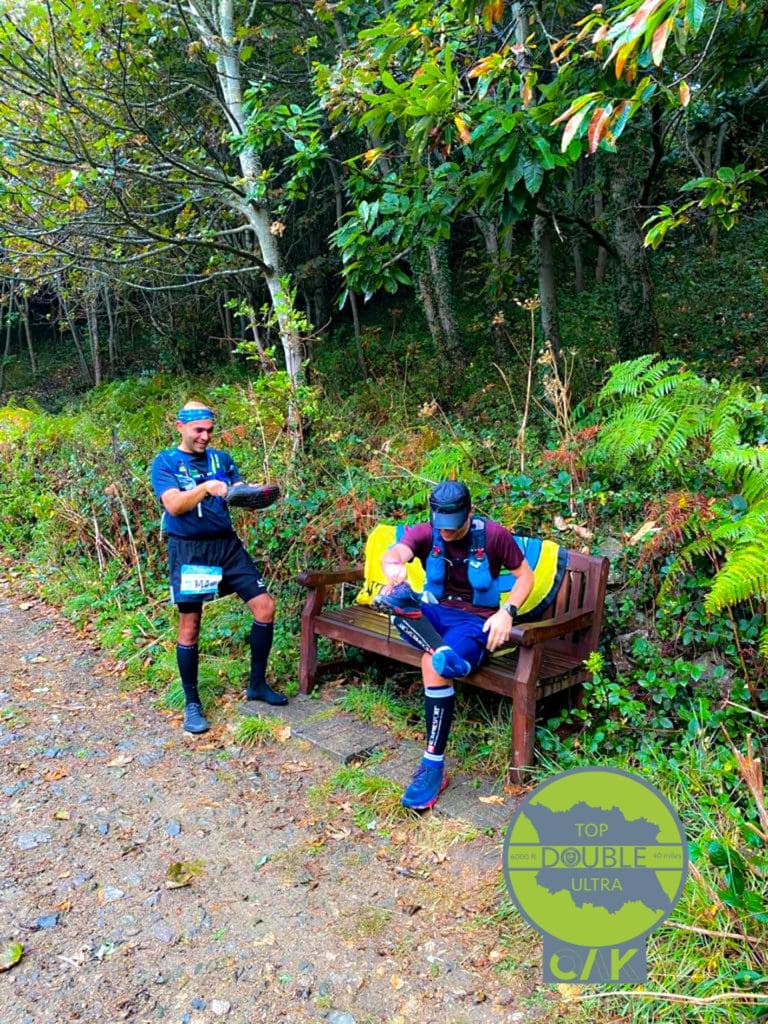Tapering and Recovery Strategies for Beginner and Intermediate Runners: A Guide.
Tapering and recovery strategies for runners form the essential cornerstons of any training plan for marathon and ultra marathon runners. Tapering is the process of gradually reducing the volume and intensity of training in the weeks leading up to a race, in order to allow the body to recover fully and be in peak condition for race day. Recovery, on the other hand, is the process of allowing the body to rest and heal after a race or hard training session, in order to prevent injury and promote physical and mental well-being. Over the last few weeks I have been chatting to runners who are just in the final lead up to marathons and ultra races in particular the Manchester Marathon, the London Marathon, and the Double Top Ultra Marathon here in Jersey, and it sent me thinking on putting something together about how beginner and intermediate runners can incorporate tapering and recovery into their training plans for the lead up to a big race. Nothing in here is groundbreaking, and I think fundamentally a lot of the choices made during training are personal, some work for some and don’t work for others, but having been at the business end of a training plan and then thrust into the no mans land of taper time, hopefully you can find some nuggets of wisdom in here.

Why Tapering and Recovery are Important for Runners
Tapering and recovery are crucial for runners for a number of reasons. First and foremost, tapering allows the body to recover fully from the stresses of training, allowing muscles to repair and energy stores to replenish. By reducing training volume and intensity, runners can prevent injury and fatigue, while also improving performance on race day. In addition, tapering allows runners to mentally prepare for the race, reducing anxiety and increasing confidence.
Recovery is equally important, as it allows the body to rest and heal after a race or hard training session. Without proper recovery, runners are more susceptible to injury and burnout, and may struggle to maintain motivation and focus over the long term. Recovery also promotes physical and mental well-being, reducing stress and improving overall quality of life.

How to Incorporate Tapering and Recovery into a Training Plan
In order to incorporate tapering and recovery into a training plan for a marathon or ultra marathon, it is important to start early and plan strategically. For most runners, the taper should begin 2-3 weeks before race day, with a gradual reduction in training volume and intensity over this period. During the taper, runners should focus on maintaining their fitness and staying active, but should avoid any hard or long training sessions that could cause undue stress or fatigue.
In addition to adjusting training volume and intensity, runners should also focus on rest and recovery during the taper period. This may include getting enough sleep, taking regular rest days, and incorporating active recovery activities such as walking, yoga, or light cross-training. Foam rolling, stretching, icing, and massage are also effective recovery techniques that can help reduce soreness and promote healing.
Mental preparation is also important during the taper period. Runners should focus on setting realistic expectations, visualizing success on race day, and staying motivated and positive throughout the process. This may involve engaging in positive self-talk, practicing mindfulness or meditation, and seeking support from coaches, friends, or family.

Successful Tapering and Recovery Plans
There are many successful tapering and recovery plans used by professional coaches and runners that can be adapted for beginner and intermediate runners. One popular approach is the 2-week taper, which involves reducing training volume by 20-30% in the first week, and by 50-60% in the second week. Another effective approach is the step-back method, which involves reducing training volume every third week throughout the training cycle, before tapering in the final 2-3 weeks before the race

Nutrition and Hydration Strategies for Tapering and Recovery
Proper nutrition and hydration are essential for both tapering and recovery. During the taper period, runners should focus on increasing carbohydrate intake to ensure optimal energy levels on race day. Hydration is also important, and runners should aim to drink plenty of water and electrolyte-rich fluids in the days leading up to the race. After the race, runners should focus on incorporating protein into their recovery meals to promote muscle repair and growth.

Common Mistakes to Avoid
When it comes to tapering and recovery, there are several common mistakes that beginner and intermediate runners should avoid. One of the most common mistakes is not starting the taper early enough. Tapering should typically begin 2-3 weeks before race day, depending on the individual’s training schedule and fitness level. If the taper period is too short, runners may not fully recover from the stresses of training, and may not perform as well on race day.
Another common mistake is neglecting proper rest and recovery. During the taper period, runners should prioritize rest and recovery, including getting enough sleep, taking regular rest days, and incorporating active recovery activities. Neglecting rest and recovery can lead to injury, burnout, and reduced performance.
In addition to tapering and recovery, injury prevention techniques and exercises are also essential for marathon and ultra marathon runners. Strengthening exercises for the hips, core, and glutes can help improve running form and reduce the risk of injury, while dynamic stretching and foam rolling can help improve flexibility and mobility. Incorporating rest days and cross-training activities, such as cycling or swimming, can also help prevent injury and improve overall fitness. It is important to listen to the body and adjust training plans accordingly to prevent overuse injuries.

Conclusion
Tapering and recovery are essential elements of any training plan for marathon and ultra marathon runners. By incorporating these strategies into a training plan for your race, runners can improve their performance, prevent injury, and promote physical and mental well-being. By starting the taper early enough, prioritizing rest and recovery, and incorporating injury prevention techniques and exercises, this can a long way to helping runners achieve their goals and enjoy a successful race day.